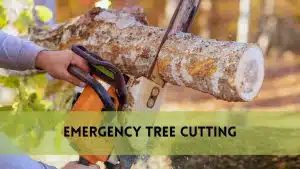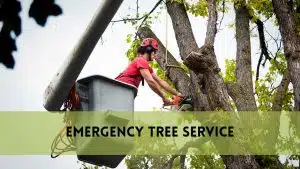Vines may give a touch of greenery and beauty to your landscape, but they may become an issue when they begin to climb and entangle big trees. Invasive vines may choke and weaken trees, putting their health and stability at danger. This step-by-step instruction will help you regain your trees and maintain their well-being if you’re wondering how to efficiently remove vines from tall trees.
Understanding The Dangers Of Invasive Vines
Threat to Tree Health: Invasive vines fight for crucial nutrients and water with trees. They have the potential to harm the tree, leaving it more prone to diseases and pests.
Structural Damage: As vines grow, they add weight and pressure to the tree’s branches, potentially causing them to break and fall.
Aesthetic Appeal: Overgrown vines can conceal the inherent beauty of the tree and restrict sunlight, impacting the overall appearance of your garden.
Identifying vines
Some vines have different bark textures or patterns. Poison ivy vines, for example, have hairy stems. Check the vine for any blossoms or fruits. These can give important identifying cues. Grapevines, for example, generate bunches of grapes, whilst wisteria vines feature characteristic purple or white blooms.
Some vines, such as English ivy, attach to surfaces with root-like structures, while others weave around things or ascend with tendrils.
Some vines’ edges are serrated or toothed, while others are smooth. Different vines have different leaf forms and combinations. English ivy, for example, has dark green, glossy leaves that are lobed or palmate in form, but poison ivy has complex leaves with three leaflets.
Tools needed
- Gloves
- Pruning shears or loppers
- Ladder
- Hand saw
Steps To Remove Vines From Tall Trees
- Locate the vine’s base at ground level, where it joins to the tree’s roots. Make a clean cut at the base of the vine with pruning shears or loppers, ensuring that no portion of the vine remains attached to the tree. It is critical to cut near the base to avoid regrowth.
- Gently remove the clipped vine away from the tree trunk after cutting it at the base. During this process, take care not to harm the tree’s bark. Untangle the vine if it has become knotted or looped around branches.Place the cut vine in a yard trash bag or set it away to compost or dispose of it.
- Examine the tree for any remaining vines or tendrils, especially higher up in the canopy. Carefully remove any additional vines using pruning shears, loppers, or a hand saw.
- After removing the vines, closely monitor the tree’s health. Look for signs of recovery or any remaining vines.
- If the tree has been significantly impacted, consider pruning dead or damaged branches to encourage healthy growth.
- Always be mindful of the environment when removing vines. Avoid harming other plants and wildlife in the process.
Preventing Regrowth of Vines
- Conduct frequent tree inspections to detect any new vine development early on. Remove any new vines as soon as they emerge.
- Continue to remove any vine shoots or tendrils that try to climb the tree by hand. Maintain vigilance in maintaining the tree vine-free.
- Apply a heavy layer of mulch around the tree’s base. This helps to suffocate any residual vine roots while also discouraging future growth. To build a barrier against vines, consider placing ground cover plants or landscaping cloth beneath the mulch.
- Maintain the tree’s form by pruning it on a regular basis and removing any branches or leaves that may create a path for vines to climb.
- Plant vine-resistant plants around the base of the tree to create a natural pesticide barrier. These plants may keep vines away from the tree.
- Pruning and trimming the tree on frequently can help to eliminate branches that may give a path for vines to climb. This can also assist to boost the general health of the tree.
Why Removing Vines from Tall Trees Are Important
- It obstruct the tree’s access to nutrients and sunlight
- Invasive vines such as ivy english have tendency to grow faster
- The weight of vines can put stress on tree branches causing them to break
- Vines can promote growth of harmful fungi and pests
- Vines reduces tree’s beauty and landscape
- Overgrown vines can obscure visibility, creating safety hazards.
FAQs
Are all vines harmful to trees?
No, not all vines are harmful. Some are benign, while others can be invasive.
Can I use chemicals to remove vines?
Yes, herbicides can be effective, but use them cautiously and follow the manufacturer’s instructions.
What are the most common types of invasive vines?
Common invasive vines include English ivy, kudzu, and Japanese honeysuckle.
What kills vines naturally
you can use natural herbicides as an alternative. Mix a solution of vinegar or boiling water and carefully apply it to the vine’s leaves and roots. Be cautious not to let the solution touch the tree’s bark.
Are vines harm for trees?
They have the potential to injure or even kill trees. English ivy, oriental bittersweet, and wisteria are examples of this. Allowing vines to grow up trees may provide shade, especially if they reach far into the canopy. They battle with trees for much more than just sunshine; they also compete for water, nutrients, air, and space.
Conclusion
Remove vines from tall trees is essential for the well-being of the trees themselves, the safety of your property, and the preservation of the local ecosystem. Regular maintenance and vine removal contribute to the long-term health and vitality of your trees and the overall beauty of your landscape.




